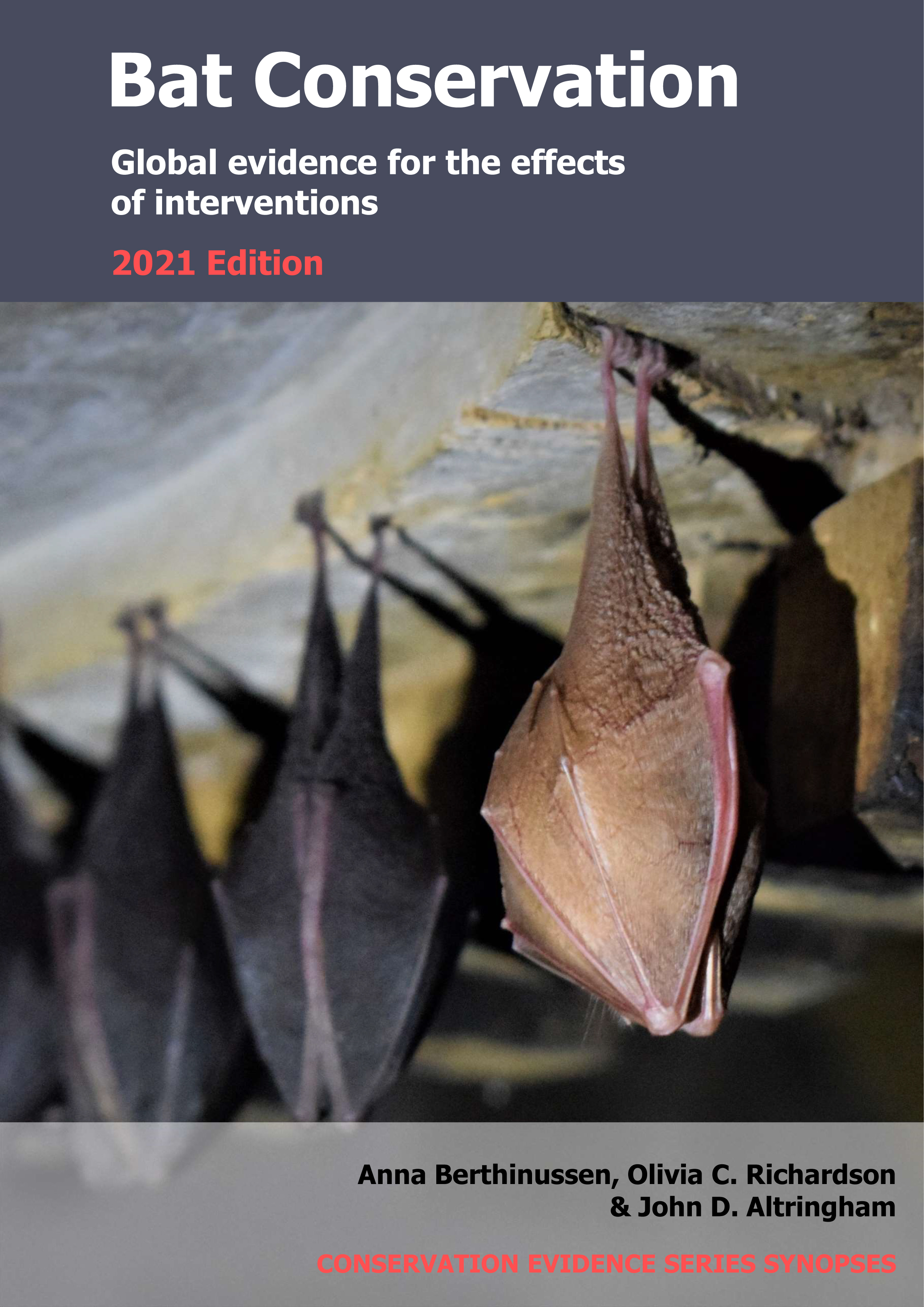Change timing of building work
-
Overall effectiveness category Unknown effectiveness (limited evidence)
-
Number of studies: 1
View assessment score
Hide assessment score
How is the evidence assessed?
-
Effectiveness
50% -
Certainty
12% -
Harms
0%
Study locations
Supporting evidence from individual studies
A before-and-after study in 2004–2008 of one building renovation in Ireland (Aughney 2008) found that carrying out roofing work outside of the maternity season, along with retaining existing bat access points, resulted in a similar number of brown long-eared bats Plecotus auritus using a roost within an attic before and after renovations. Fifteen brown long-eared bats were counted roosting in the attic space of the building before renovation work. After the renovation work, sixteen brown long-eared bats were recorded exiting the roost through the retained access points. The building was an 18th century Georgian house that had the roofing felt and roof slates replaced. Original access points to the roost within the attic of the building were retained by installing four vents in the ridge tiles. The renovations were completed outside of the maternity season (date not reported). The attic was surveyed once in 2004 before the renovations, and once with an emergence survey in September 2008 after the renovations.
Study and other actions tested
Where has this evidence come from?
List of journals searched by synopsis
All the journals searched for all synopses
This Action forms part of the Action Synopsis:
Bat Conservation
Bat Conservation - Published 2021
Update 2020





)_2023.JPG)














